 W
WThe 1906 San Francisco earthquake struck the coast of Northern California at 5:12 a.m. on Wednesday, April 18 with an estimated moment magnitude of 7.9 and a maximum Mercalli intensity of XI (Extreme). High-intensity shaking was felt from Eureka on the North Coast to the Salinas Valley, an agricultural region to the south of the San Francisco Bay Area. Devastating fires soon broke out in the city and lasted for several days. More than 3,000 people died. Over 80% of the city of San Francisco was destroyed. The events are remembered as one of the worst and deadliest earthquakes in the history of the United States. The death toll remains the greatest loss of life from a natural disaster in California's history and high on the lists of American disasters.
 W
W1906 is a 2004 American fictional historical novel written by James Dalessandro. With a 38-page outline and six finished chapters, he pitched it around Hollywood in 1998 for a film by the same name, based upon events surrounding the great San Francisco earthquake and fire of 1906.
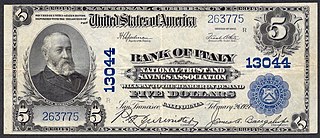 W
WThe Bank of Italy was founded in San Francisco, California, United States, on October 17, 1904 by Amadeo P. Giannini. It grew by a branch banking strategy to become Bank of America, the world's largest commercial bank, with 493 branches in California and assets of $5 billion in 1945.
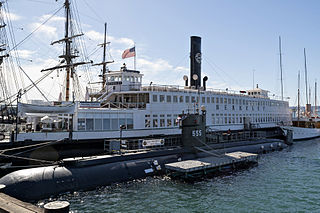 W
WBerkeley was one of several ferryboats of the Southern Pacific Railroad that for sixty years operated on San Francisco Bay between the Oakland Pier and the San Francisco Ferry Building. Built in 1898 by the Union Iron Works of San Francisco, she served after the 1906 earthquake, ferrying refugees across the bay to Oakland.
 W
WThe first USS Chicago was a protected cruiser of the United States Navy, the largest of the original three authorized by Congress for the "New Navy". One of the U.S. Navy's first four steel ships.
 W
WThis Committee of Fifty, sometimes referred to as Committee of Safety, Citizens' Committee of Fifty or Relief and Restoration Committee of Law and Order, was called into existence by Mayor Eugene Schmitz during the 1906 San Francisco earthquake. The Mayor invited civic leaders, entrepreneurs, newspaper men and politicians—but none of the members of the San Francisco Board of Supervisors—to participate in this committee in whose hands the civil administration of San Francisco would rest.
 W
WHorace Davis was a United States Representative from California. He was the son of Massachusetts Governor John Davis and the younger brother of diplomat John Chandler Bancroft Davis.
 W
WIn geology, the elastic-rebound theory is an explanation for how energy is released during an earthquake.
 W
WKatharine Conway "Kitty" Felton (1873–1940) was a head of Associated Charities in San Francisco at the turn of the 20th century.
 W
WFrederick Funston, also known as Fighting Fred Funston, was a general in the United States Army, best known for his roles in the Spanish–American War and the Philippine–American War. He received the Medal of Honor for his actions during the Philippine–American War.
 W
WAmadeo Pietro Giannini, also known as Amadeo Peter Giannini or A. P. Giannini was an Italian-American banker who founded the Bank of Italy, which became Bank of America. Giannini is credited as the inventor of many modern banking practices. Most notably, Giannini was one of the first bankers to offer banking services to middle-class Americans, rather than only the upper class. He also pioneered the holding company structure and established one of the first modern trans-national institutions.
 W
WCaspar Frederick Goodrich was an admiral of the United States Navy, who served in the Spanish–American War and World War I.
 W
WUSS Grampus (SS-4), a Plunger-class submarine later named A-3, was the fourth ship of the United States Navy to be named for a member of the dolphin family, Grampus griseus.
 W
WThe Grand Opera House was an opera house in San Francisco, which opened in 1874, and which was destroyed in the 1906 San Francisco earthquake.
 W
WFrancis Joseph "Frank" Heney was a lawyer, judge, and politician. Heney is known for killing an opposing plaintiff in self-defense and for being shot in the head by a prospective juror during the San Francisco graft trials. In 1891, while an attorney in Tucson, Arizona Territory, he defended the abused wife of John C. Handy. Handy attacked Heney, who shot and killed Handy. Heney later served as Attorney General of the Arizona Territory between 1893 and 1895. He was the chief prosecutor of the Oregon Land Fraud scandal from 1904 to 1910 and served as US District Attorney for the District of Oregon, from January 9 to December 3, 1905. He prosecuted corrupt San Francisco politicians, from 1906 to 1908.
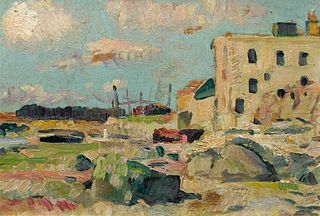 W
WGeorge Leslie Hunter was a Scottish painter, regarded as one of the four artists of the Scottish Colourists group of painters. Christened simply George Hunter, he adopted the name Leslie in San Francisco, and Leslie Hunter became his professional name. Showing an aptitude for drawing at an early age, he was largely self-taught, receiving only elementary painting lessons from a family acquaintance. He spent fifteen formative years from the age of fifteen in the US, mainly in California. He then returned to Scotland, painting and drawing there and in Paris. Subsequently, he travelled widely in Europe, especially in the South of France, but also in the Netherlands, the Pas de Calais and Italy.
 W
WCarl Kahler, also Karl Kahler, was an Austrian genre and animal painter, particularly known for his paintings of cats.
 W
WAndrew Cowper Lawson was a Scots-Canadian geologist who became professor of geology at the University of California, Berkeley. He was the editor and co-author of the 1908 report on the 1906 San Francisco earthquake which became known as the "Lawson Report". He was also the first person to identify and name the San Andreas Fault in 1895, and after the 1906 quake, the first to delineate the entire length of the San Andreas Fault which previously had been noted only in the San Francisco Bay Area. He also named the Franciscan Complex.
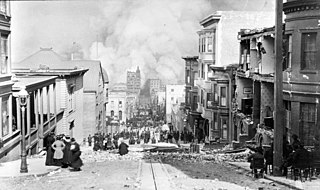 W
WLooking Down Sacramento Street, San Francisco, April 18, 1906 is a black and white photograph taken by Arnold Genthe in San Francisco, California on the morning of April 18, 1906 in the wake of the 1906 San Francisco earthquake.
 W
WLotta's fountain is a fountain at the intersection of Market Street, where Geary and Kearny Streets connect in downtown San Francisco, California. It was commissioned by actress Lotta Crabtree in 1875 as a gift to the city of San Francisco, and would serve as a significant meeting point in the aftermath of the 1906 San Francisco earthquake and fire.
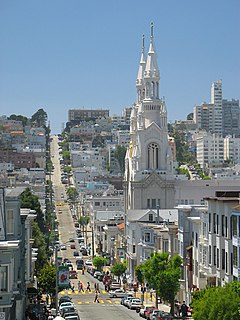 W
WNorth Beach is a neighborhood in the northeast of San Francisco adjacent to Chinatown, the Financial District, and Russian Hill. The neighborhood is San Francisco's "Little Italy" and has historically been home to a large Italian American population, largely from Northern Italy. It still has many Italian restaurants, though many other ethnic groups currently live in the neighborhood. It was also the historic center of the beatnik subculture and has become one of San Francisco's main nightlife districts as well as a residential neighborhood populated by a mix of young urban professionals, families, and Chinese immigrants.
 W
WThe Ocean Shore Railroad was a railroad built between San Francisco and Tunitas Glen, and Swanton and Santa Cruz that operated along the Pacific coastline from 1905 until 1920. The route was originally intended to be continuous but the 1906 San Francisco Earthquake, financial difficulties, and the advent of the automobile caused the line to remain divided into a Northern and Southern Division.
 W
WFusakichi Omori was a pioneer Japanese seismologist, second chairman of seismology at the Imperial University of Tokyo and president of the Japanese Imperial Earthquake Investigation Committee. Omori is also known for his observation describing the aftershock rate of earthquakes, now known as Omori's law.
 W
WThe second USS Perry (DD-11) was a Bainbridge-class destroyer in the United States Navy. She was named for Commodore Oliver Hazard Perry.
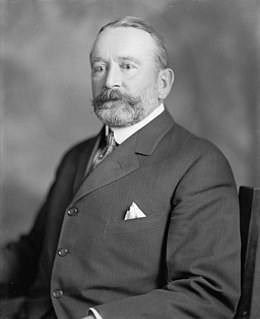 W
WJames Duval Phelan was an American politician, civic leader and banker. He served as Mayor of San Francisco from 1897 to 1902 and represented California in the United States Senate from 1915 to 1921. Phelan was also active in the movement to restrict Japanese and Chinese immigration to the United States.
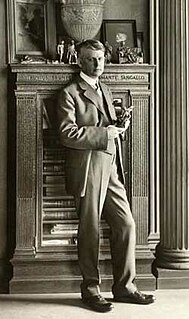 W
WWillis Jefferson Polk was an American architect best known for his work in San Francisco, California. For ten years, he was the West Coast representative of D.H. Burnham & Company. In 1915, Polk oversaw the architectural committee for the Panama–Pacific International Exposition (PPIE).
 W
WRincon Hill is a neighborhood in San Francisco, California. It is one of San Francisco's 49 hills, and one of its original "Seven Hills." The relatively compact neighborhood is bounded by Folsom Street to the north, the Embarcadero to the east, Bryant Street on the south, and Essex Street to the west. Rincon Hill is located just south of the Transbay development area, part of the greater South of Market area. The hill is about 100 feet tall.
 W
WAbraham Ruef, known as Abe Ruef, was an American lawyer and politician. He gained notoriety as the corrupt political boss behind the administration of Mayor Eugene Schmitz of San Francisco during the period before and after the 1906 San Francisco earthquake.
 W
WThe San Andreas Fault is a continental transform fault that extends roughly 1,200 kilometers (750 mi) through California. It forms the tectonic boundary between the Pacific Plate and the North American Plate, and its motion is right-lateral strike-slip (horizontal). The fault divides into three segments, each with different characteristics and a different degree of earthquake risk. The slip rate along the fault ranges from 20 to 35 mm /yr.
 W
WEugene Edward Schmitz, often referenced as "Handsome Gene" Schmitz, was an American musician and politician, the 26th mayor of San Francisco (1902-7), who was in office during the 1906 San Francisco earthquake.
 W
WDennis T. Sullivan was the Chief of the San Francisco Fire Department in 1906. He was mortally wounded during the 1906 San Francisco earthquake, when a neighboring building collapsed onto the fire station that housed the Chief's official apartment.
 W
WBenjamin Ide Wheeler was a professor of Greek and comparative philology at Cornell University, writer, and President of the University of California from 1899 to 1919.
 W
WSimon Winchester, is a British-American author and journalist. In his career at The Guardian newspaper, Winchester covered numerous significant events, including Bloody Sunday and the Watergate Scandal. Winchester has written or contributed to more than a dozen nonfiction books, has written one novel, and has contributed to several travel magazines, among them Condé Nast Traveler, Smithsonian Magazine, and National Geographic. He lives in Berkshire County, Massachusetts.